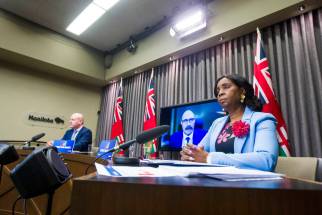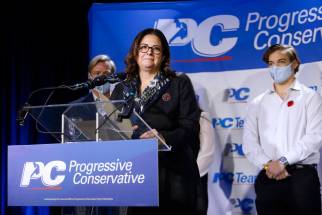Tories gear up for reopening even as ICU doc says ‘we’re almost drowning’
Read this article for free:
or
Already have an account? Log in here »
To continue reading, please subscribe:
Monthly Digital Subscription
$0 for the first 4 weeks*
- Enjoy unlimited reading on winnipegfreepress.com
- Read the E-Edition, our digital replica newspaper
- Access News Break, our award-winning app
- Play interactive puzzles
*No charge for 4 weeks then price increases to the regular rate of $19.00 plus GST every four weeks. Offer available to new and qualified returning subscribers only. Cancel any time.
Monthly Digital Subscription
$4.75/week*
- Enjoy unlimited reading on winnipegfreepress.com
- Read the E-Edition, our digital replica newspaper
- Access News Break, our award-winning app
- Play interactive puzzles
*Billed as $19 plus GST every four weeks. Cancel any time.
To continue reading, please subscribe:
Add Free Press access to your Brandon Sun subscription for only an additional
$1 for the first 4 weeks*
*Your next subscription payment will increase by $1.00 and you will be charged $16.99 plus GST for four weeks. After four weeks, your payment will increase to $23.99 plus GST every four weeks.
Read unlimited articles for free today:
or
Already have an account? Log in here »
Hey there, time traveller!
This article was published 28/01/2022 (1411 days ago), so information in it may no longer be current.
Manitoba will roll back public health restrictions under a phased reopening plan that could begin next month depending on trends in COVID-19 hospital admissions and the spread of the virus.
On Friday, Health Minister Audrey Gordon said the provincial government will bring forward new public health orders next week that will likely include an “outline to reopen the province,” after announcing current restrictions would be extended to Feb. 8.
“The public health orders were always meant to be temporary,” Gordon said during a press conference with chief provincial public health officer Dr. Brent Roussin and new health system incident commander Dr. David Matear.
“We’ve always been looking towards normalcy and getting Manitoba back to a state, it may be a new normal, but certainly a state where we can carry out our lives.”
Roussin said the one-week extension will allow public health to collect more information about the trajectory of the virus in the province and the impact on the hospital system.
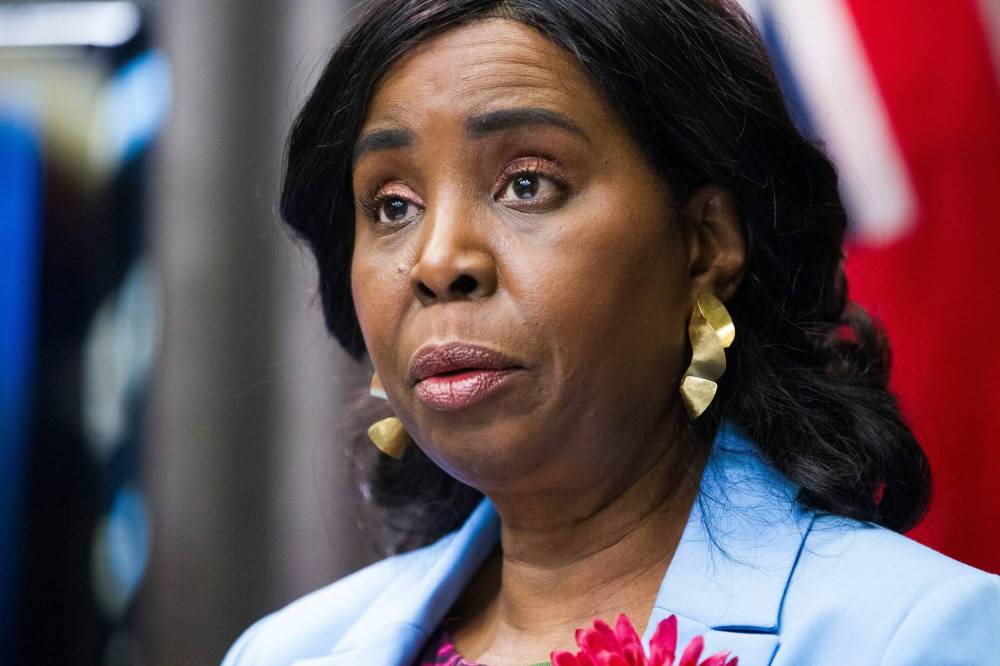
“We’ve always been looking towards normalcy and getting Manitoba back to a state, it may be a new normal, but certainly a state where we can carry out our lives.”
– Health Minister Audrey Gordon
“A week may not seem like a lot of time, but at the juncture we’re in, it’s going to provide us, likely, with significant more information,” he said.
Infections driven by the Omicron variant appear to be levelling out, while new admissions to hospital are stabilizing, he said. However, recent results from wastewater surveillance in Winnipeg suggest infection levels may be increasing.
Roussin presented pandemic modelling that shows hospital admissions may have reached a plateau and could be on a slow downward trajectory.

Admissions to intensive care, however, are projected to increase, with a peak expected around Feb. 10. The projection indicated total peak critical-care admissions to range between 65 and 85 patients.
On Friday, 52 Manitobans were in intensive care for COVID-19, out of 110 ICU patients. Over the past week, 39 COVID patients were admitted to ICU, nine of them on Thursday.
Tories foolish to consider opening up amid widespread suffering

Posted:
It’s hard to imagine how the government could consider loosening restrictions when hospitals are overwhelmed with COVID-19 patients, surgeries continue to be cancelled and dozens of patients per week are transferred to hospitals far from home.
A total of 715 people were in hospital with COVID-19 on Friday and just 182 medicine beds were free across the province. Officials said it appears the Omicron variant has replaced Delta as the dominant strain among ICU patients, while both variants are responsible for putting people in hospital.
“We are seeing some indicators of that plateau but we need to look further at this data, have some more time to see these trends, so that we can again make better informed decisions about these public health orders,” Roussin said.
Matear said hospitals can expand critical care capacity to 123 beds and work is underway to add more.
“Our medical, operations and planning leads continue to monitor the ICU and overall hospitalization trends very closely, and have contingency plans ready if conditions escalate,” Matear said, adding planning is informed by public health modelling.
However, to have 123 critical care beds, elective procedures and surgeries, clinics, home health services and other non-essential services would be further reduced, Matear said.
Patients will continue to be transferred to facilities outside of their home region to make space for COVID-19 patients, he noted. To date, 253 people have been transferred out of their home community to receive health care services under the pandemic era protocol introduced last October, including 39 in the past week.
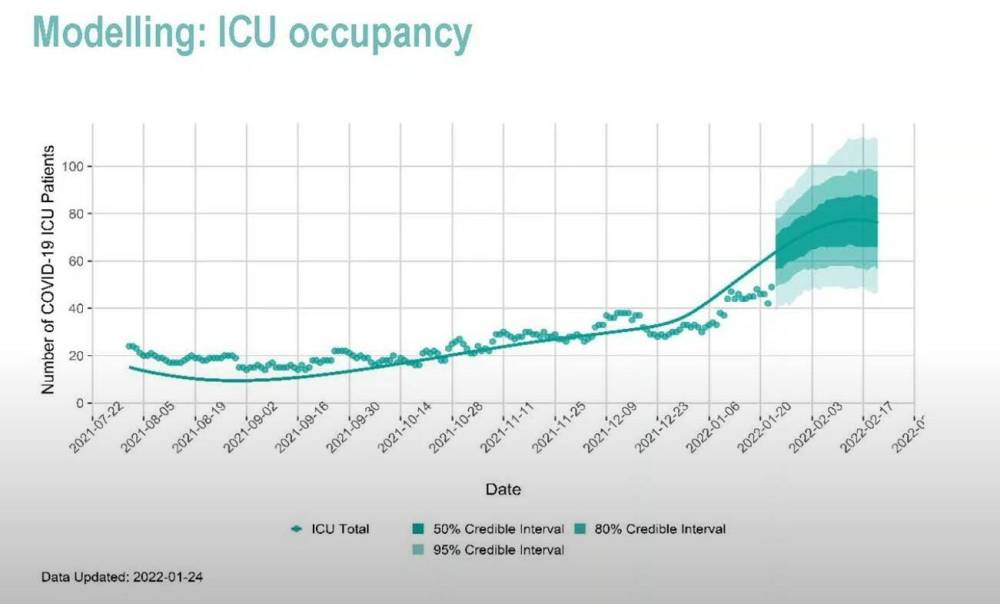
Matear said fewer health-care workers in Winnipeg called in sick during the most recent two-week pay period but cautioned there is still a “long road back to normal.”
“The number of hours lost amounted to the equivalent of 77,000 hours, which is up nearly 3,700 hours per week from the previous pay period,” Matear said.
Grace Hospital intensive care physician Dr. Doug Eyolfson said it will be difficult for the province to scale up critical care and respond to the projected peak in COVID-19 admissions.
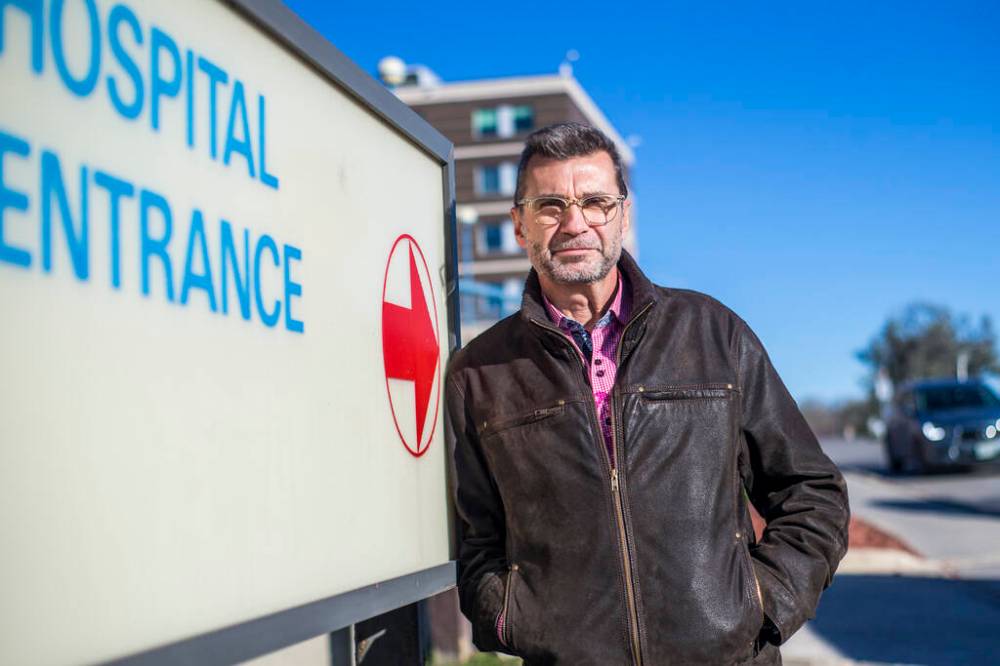
“We’re at capacity and we certainly have times when we’re just absolutely full and we don’t know where we’re going to put patients,” Eyolfson said. “We’re very, very busy and we don’t see anything that looks like any relief in sight.”
Eyolfson said he is skeptical about the province’s ability to staff more ICU beds should they be required. He said the number of COVID-19 patients in hospital needs to come down dramatically before public health restrictions are lifted.
“We’re pretty much on the edge. We’re almost drowning,” he said. “Everyone is doing their best to provide the best care and to be prepared. It’s demoralizing to see just how full we are and there’s no end in sight.”
“Everyone is doing their best to provide the best care and to be prepared. It’s demoralizing to see just how full we are and there’s no end in sight.”
– Grace Hospital intensive care physician Dr. Doug Eyolfson
Manitobans deserve to hear the recommendations public health officials are providing to elected officials, NDP Leader Wab Kinew said. He called on the government to provide more pandemic data to support its reopening plans.
“It’s also important to put before Manitobans what the advice was so that they get a sense where the public health experts are landing right now,” Kinew said, adding it will help people manage their COVID-19 risk and evaluate government decisions. “Modelling data around ICUs projects the situation to continue to get worse so I think Manitobans should keep a very close eye on what happens.”
Liberal Leader Dougald Lamont said he was extremely concerned to hear the health minister raise the spectre of reopening plans while Manitoba reports one of the country’s highest COVID-19 mortality rates.
Lamont said the government must do a better job of providing Manitobans with the tools to live with COVID-19, including tests and high-quality masks.
— with files from Katie May
danielle.dasilva@freepress.mb.ca
Details of public health orders

Our newsroom depends on a growing audience of readers to power our journalism. If you are not a paid reader, please consider becoming a subscriber.
Our newsroom depends on its audience of readers to power our journalism. Thank you for your support.
History
Updated on Friday, January 28, 2022 6:11 PM CST: Adds photos and pullquotes.
Updated on Friday, January 28, 2022 6:15 PM CST: Adds pdf to body of story

